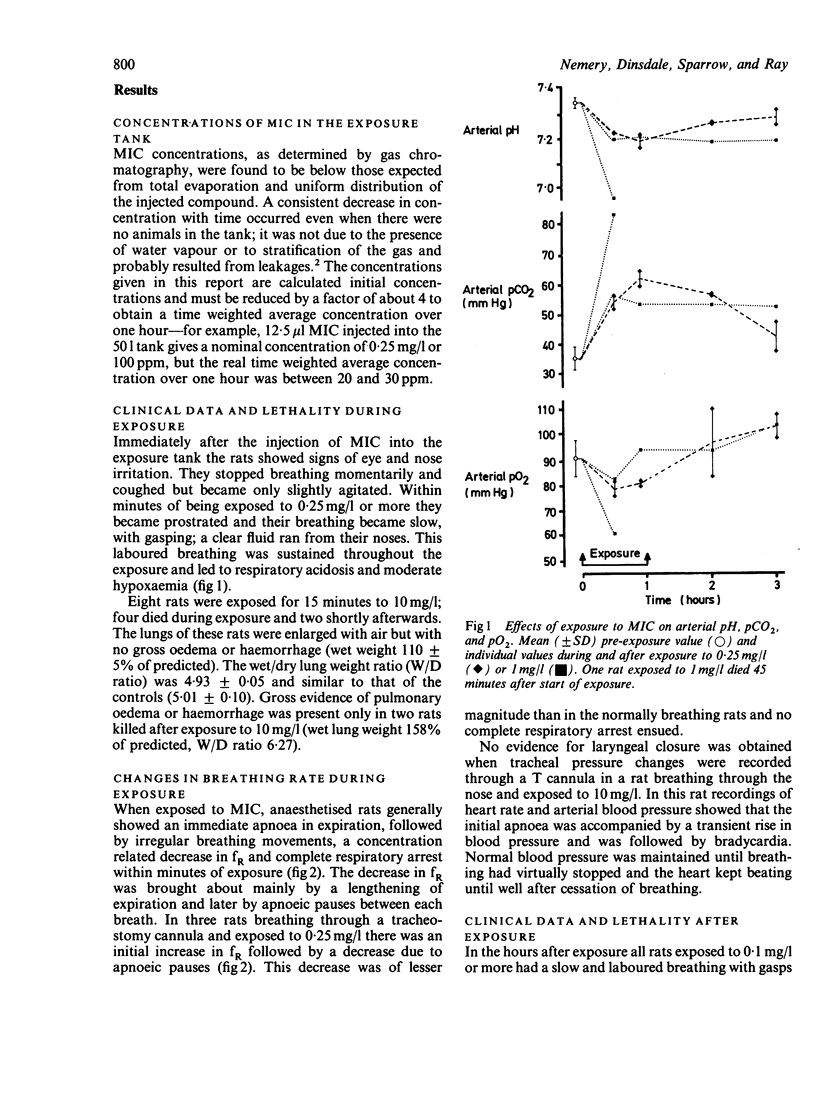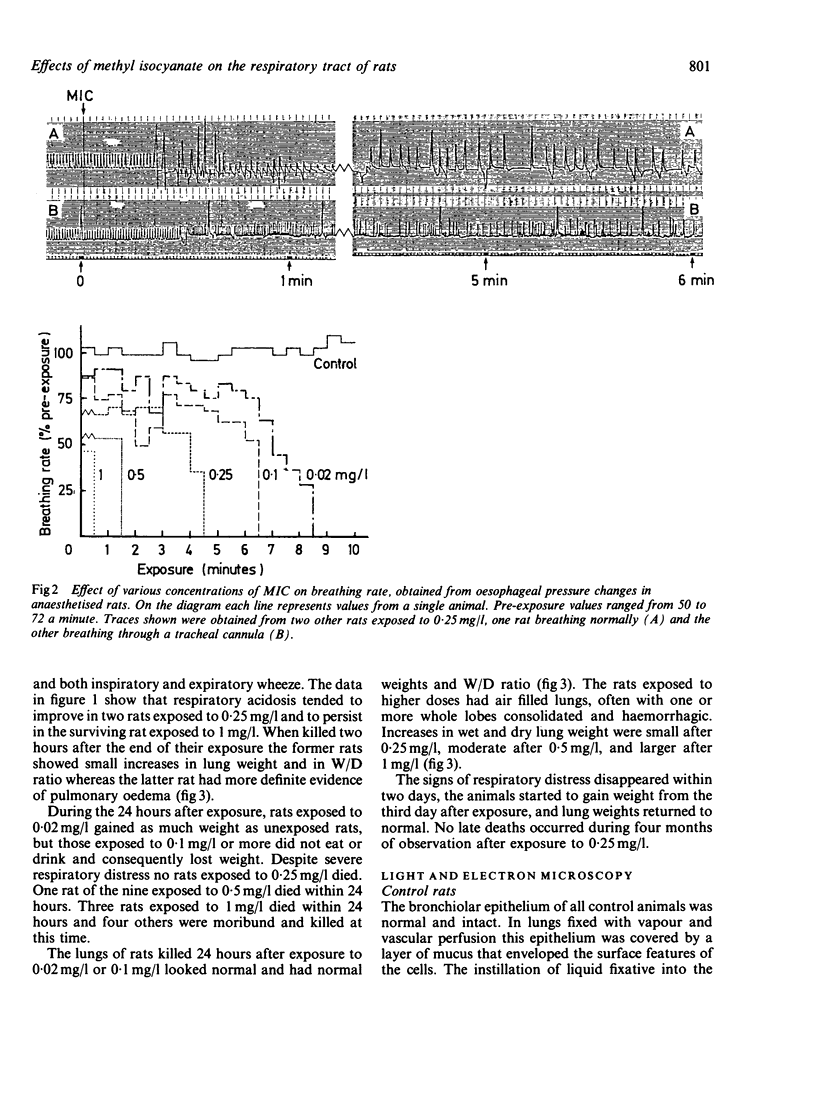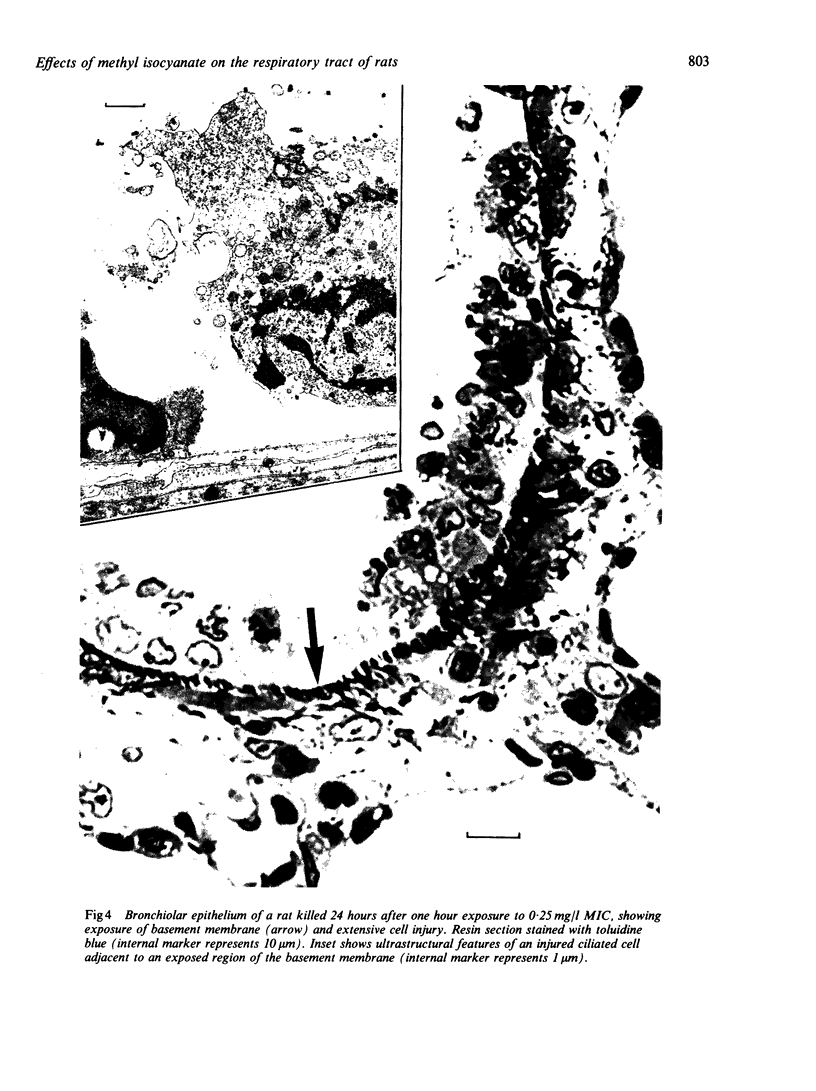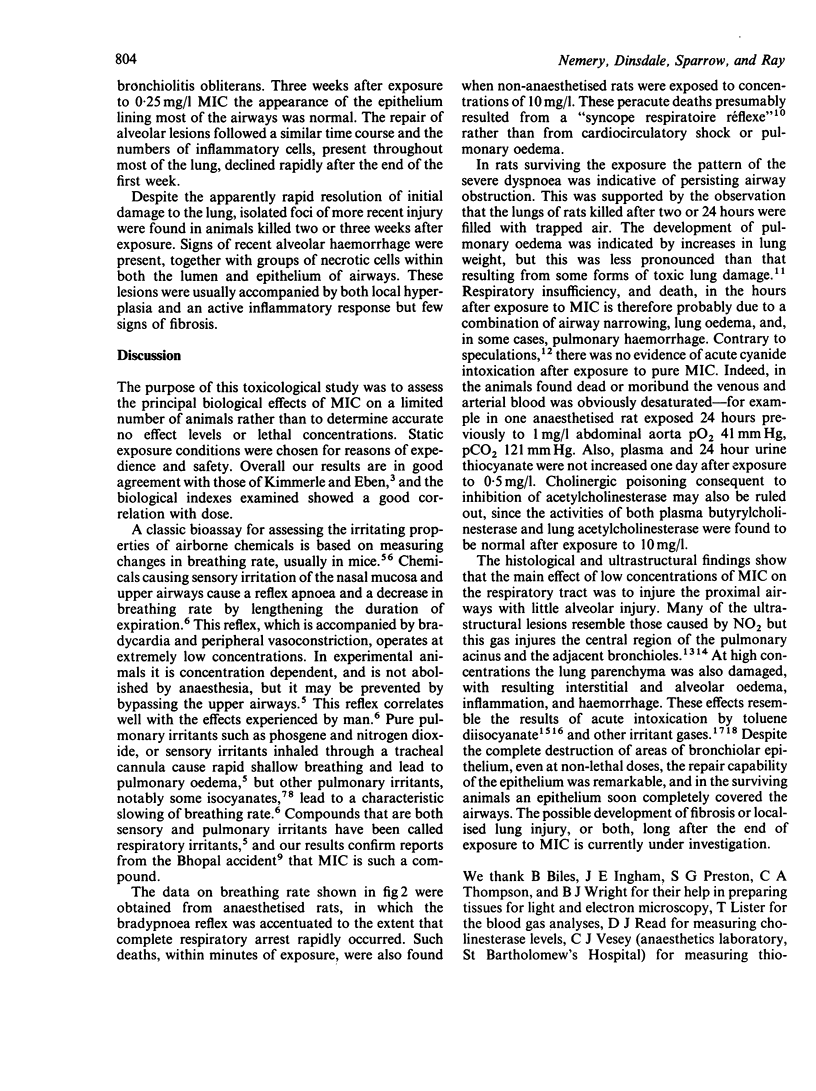Abstract
Static exposure of rats to methyl isocyanate, for one hour, led to respiratory impairment during and after exposure. The resultant changes in breathing pattern suggest that this compound is both a sensory and a pulmonary irritant. Low concentrations resulted in extensive necrosis and loss of epithelial cells in the proximal airways but widespread alveolar damage was found only after exposure to high, lethal concentrations. At high concentrations methyl isocyanate probably caused peracute death through reflex inhibition of breathing. Animals surviving the exposure exhibited signs of airway narrowing and development of (haemorrhagic) pulmonary oedema. The epithelial lesions were repaired rapidly, but residual peribronchial fibrosis and signs of renewed injury/inflammation were apparent.
Full text
PDF






Images in this article
Selected References
These references are in PubMed. This may not be the complete list of references from this article.
- Andersson N., Muir M. K., Mehra V. Bhopal eye. Lancet. 1984 Dec 22;2(8417-8418):1481–1481. doi: 10.1016/s0140-6736(84)91685-4. [DOI] [PubMed] [Google Scholar]
- Charan N. B., Myers C. G., Lakshminarayan S., Spencer T. M. Pulmonary injuries associated with acute sulfur dioxide inhalation. Am Rev Respir Dis. 1979 Apr;119(4):555–560. doi: 10.1164/arrd.1979.119.4.555. [DOI] [PubMed] [Google Scholar]
- Dinsdale D., Verschoyle R. D., Ingham J. E. Ultrastructural changes in rat Clara cells induced by a single dose of O,S,S-trimethyl phosphorodithioate. Arch Toxicol. 1984 Nov;56(1):59–65. doi: 10.1007/BF00316355. [DOI] [PubMed] [Google Scholar]
- Evans M. J. Oxidant gases. Environ Health Perspect. 1984 Apr;55:85–95. doi: 10.1289/ehp.845585. [DOI] [PMC free article] [PubMed] [Google Scholar]
- KIMMERLE G., EBEN A. ZUR TOXICITAET VON METHYLISOCYANAT UND DESSEN QUANTITATIVER BESTIMMUNG IN DER LUFT. Arch Toxikol. 1964 May 27;20:235–241. [PubMed] [Google Scholar]
- KLAVIS G., SCHULZ L. C. [Experimental animal studies on the specific action and late sequelae of desmodur 15]. Arch Toxikol. 1959;17:338–346. [PubMed] [Google Scholar]
- Kaufman J., Burkons D. Clinical, roentgenologic, and physiologic effects of acute chlorine exposure. Arch Environ Health. 1971 Jul;23(1):29–34. doi: 10.1080/00039896.1971.10665950. [DOI] [PubMed] [Google Scholar]
- Stephens R. J., Freeman G., Crane S. C., Furiosi N. J. Ultrastructural changes in the terminal bronchiole of the rat during continuous, low-level exposure to nitrogen dioxide. Exp Mol Pathol. 1971 Feb;14(1):1–19. doi: 10.1016/0014-4800(71)90048-7. [DOI] [PubMed] [Google Scholar]
- Weyel D. A., Rodney B. S., Alarie Y. Sensory irritation, pulmonary irritation, and acute lethality of a polymeric isocyanate and sensory irritation of 2,6-toleune diisocyanate. Toxicol Appl Pharmacol. 1982 Jul;64(3):423–430. doi: 10.1016/0041-008x(82)90238-1. [DOI] [PubMed] [Google Scholar]
- Weyel D. A., Schaffer R. B. Pulmonary and sensory irritation of diphenylmethane-4,4'- and dicyclohexylmethane-4,4'-diisocyanate. Toxicol Appl Pharmacol. 1985 Mar 15;77(3):427–433. doi: 10.1016/0041-008x(85)90182-6. [DOI] [PubMed] [Google Scholar]




